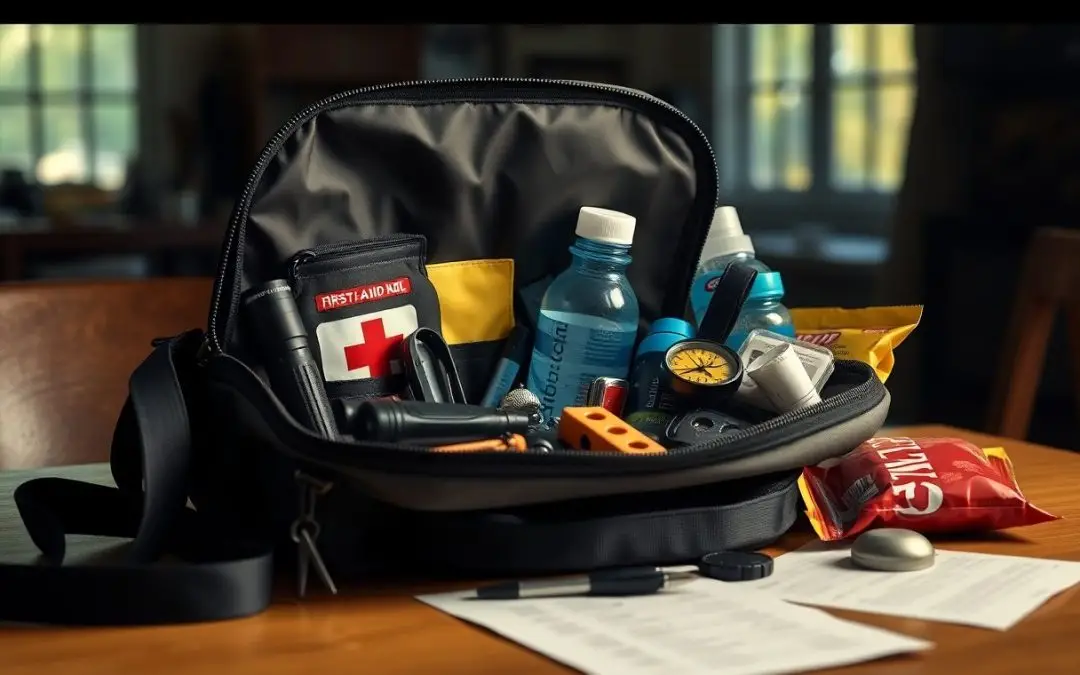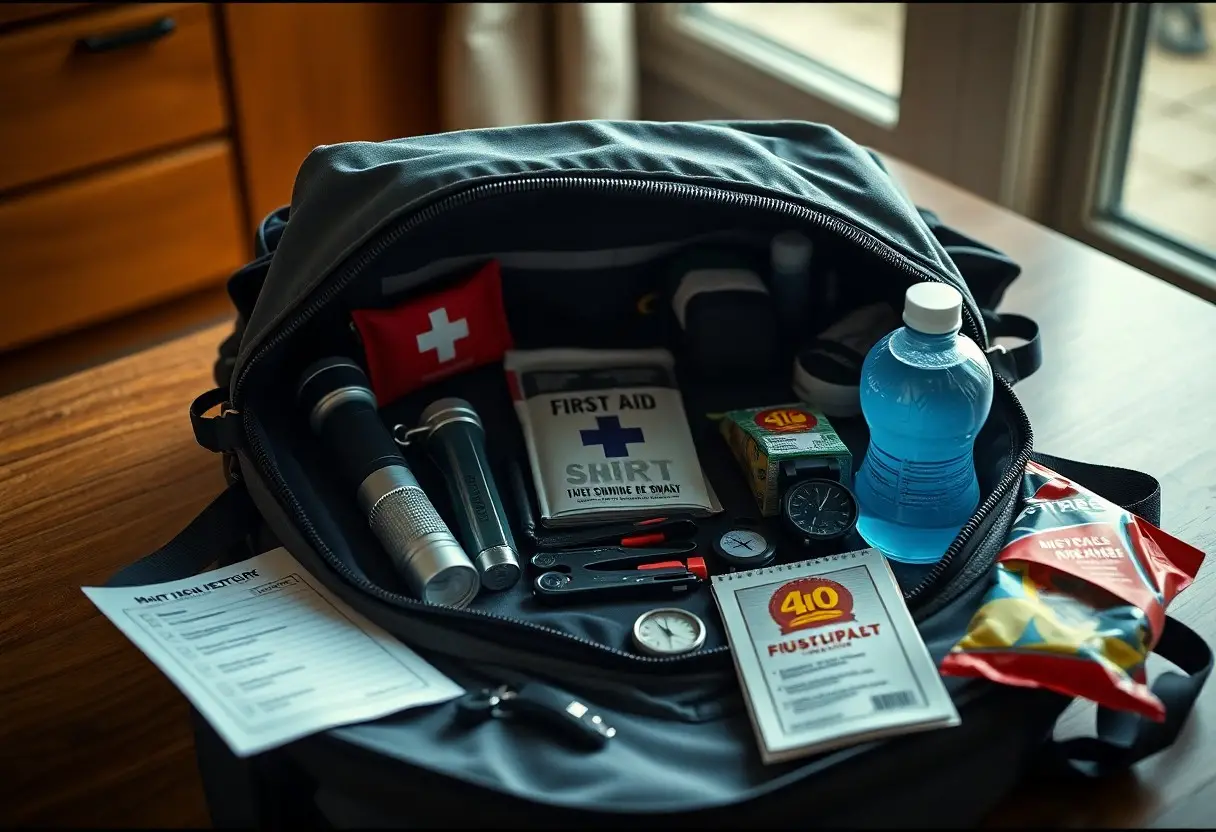Many people overlook the importance of testing their gear before an emergency arises. Conducting a “dry run” of your go bag ensures that you are familiar with its contents and functionality. By practicing with your gear in real-life scenarios, you can identify any shortcomings, missing items, or unanticipated challenges. This preparation enhances your confidence and readiness, allowing you to respond effectively when it matters most. Taking the time to test your gear could make all the difference in a high-pressure situation.
Understanding the Importance of a Go Bag
What is a Go Bag?
A Go Bag is a portable kit containing important items needed for emergency situations, allowing you to evacuate quickly and safely. Typically, it includes food, water, first aid supplies, tools, and personal documents. Each item in your Go Bag serves a specific purpose, ensuring you’re prepared for unexpected events, whether natural disasters, civil unrest, or personal crises.
Why Every Prepared Individual Needs One
Having a Go Bag is a fundamental element of personal preparedness. In emergencies, you often have little time to gather supplies, making a pre-packed Go Bag a lifesaver. With 70% of Americans living in disaster-prone areas, equipping yourself with a Go Bag can mean the difference between safety and chaos in critical moments.
In the chaos of an emergency, the convenience of a Go Bag cannot be overstated. You might face situations like wildfires, floods, or sudden evacuations where time is of the essence. A well-stocked bag not only provides immediate access to necessities but also instills confidence during high-stress scenarios. Statistics show that people with emergency plans and supplies have a significantly higher chance of staying secure and managing crises effectively. Make sure your Go Bag is tailored to your specific needs and location for maximum relevance and effectiveness.
The Concept of a “Dry Run”
Definition and Purpose
A “dry run” involves simulating a real-life scenario to test your go bag’s readiness without the pressure of an actual emergency. This practical exercise allows you to assess how well your gear performs, identify shortcomings, and make enhancements where necessary. By conducting a dry run, you can effectively gauge your preparedness for unforeseen events and ensure you can respond quickly and efficiently when it matters most.
Benefits of Conducting a Dry Run
Conducting a dry run offers valuable insights into your go bag’s functionality and your personal readiness. You’ll discover if the gear is comfortable, if items are easily accessible, and whether your packing strategy is effective. These tests promote confidence and familiarity with your supplies, enhancing your ability to act under pressure.
Additionally, dry runs can reveal potential issues like weight distribution, which can affect mobility during a real emergency. You can test your navigation skills with maps and compasses, practice assembling critical items on the go, and even time your response to different scenarios. Engaging family members in these exercises fosters teamwork and communication, ensuring everyone understands their roles and responsibilities. By fine-tuning these aspects during a dry run, you significantly increase your chances of effectively managing an emergency situation when it arises.
Key Components to Test
Thorough testing of your go bag involves examining several key components to ensure effectiveness in a real-world situation. Focus on necessary gear, checking equipment functionality, and verifying the usability of supplies. Each element plays a significant role in your preparedness and can drastically affect your outcomes in an emergency.
Essential Gear and Supplies
Your go bag should contain vital supplies, including water purification tools, first aid kits, food rations, and blankets. Test each item for expiry dates and functionality. Ensure that items like multi-tools and flashlights are in working order, and pack backup supplies where necessary. Each component must be ready at a moment’s notice.
Checking Equipment Functionality
Every piece of equipment in your go bag should work flawlessly. Conduct routine checks on items such as batteries, communication devices, and navigation tools. Familiarize yourself with their operation under pressure to avoid unexpected malfunctions during a crisis.
Assessing the functionality of your gear involves not just visual inspections but practical tests. For instance, if your flashlight requires batteries, replace them and ensure the light beam is bright and consistent. Similarly, check that your multi-tool opens and closes smoothly, and that any knives are sharp. A reliable compass should point true north, and communication devices must power on and connect to networks as needed. Regular practice using your gear helps you develop the proficiency required during emergencies, ultimately determining your effectiveness when it matters most.
Creating a Testing Plan
A well-structured testing plan ensures that every aspect of your go bag is evaluated effectively. Outline specific objectives for each session, such as functionality of gear, ease of access, and your ability to navigate challenges. Document your goals to maintain focus during testing and facilitate adjustments based on findings.
Setting Up Scenarios
Create realistic scenarios that mimic potential emergency situations you might face. This could range from a car breakdown in an isolated area to a power outage at home. Tailoring scenarios to your lifestyle will help you assess the effectiveness of your gear and prepare you mentally for unexpected challenges.
Time Management During Testing
Effective time management allows you to simulate real-world urgency during your testing sessions. Allocate specific durations for each scenario that closely resemble the amount of time you would realistically have in an emergency. This practice not only aids in evaluating your decision-making under pressure but also emphasizes the importance of speed in executing your response plan.
By setting strict time limits—perhaps 30 minutes for a simulated evacuation or a 15-minute gear check—you create an environment that tests your speed and efficiency. For instance, if you’re considering an emergency evacuation, practice packing your go bag and exiting your home within a set time. Keeping track of the time helps identify areas for improvement and ensures your testing mimics the urgency of real-life situations.
Evaluating Your Gear
After completing a dry run with your go bag, evaluating your gear is vital to ensure its reliability and functionality. This assessment allows you to identify any weaknesses, redundancies, or unnecessary items that may hinder your preparedness in an emergency situation. An effective evaluation not only enhances your overall setup but also boosts your confidence in handling unexpected circumstances.
Performance Assessment
Assess each item in your go bag for its performance during the dry run. Pay attention to functionalities like usability, durability, and weight. Whether it’s testing the water purification system or lighting tools, documenting how well each component serves its purpose will inform your decisions on what to keep or replace.
Learning from Mistakes
Identifying shortcomings during your dry run is an opportunity for growth. If an item failed or a procedure took longer than expected, take note. Analyzing these experiences can lead to better preparedness, as you’ll refine your tactics and equipment based on practical insights gained during testing.
Mistakes in your initial dry run can unravel valuable lessons that enhance your readiness. For instance, if a camping stove malfunctioned or you struggled with accessing critical items quickly, adjust your gear or organization accordingly. Perhaps you realized a specific tool isn’t necessary, or a first aid supplies checklist needs refinement. Document these observations so you can gradually shape your go bag into a cohesive, effective system tailored to your needs, ultimately increasing your confidence and readiness for any situation.
Making Adjustments and Improvements
Adjustments to your gear are necessary to ensure optimal performance in future scenarios. After evaluating your gear, identify any items that were cumbersome, redundant, or inadequate. This process can help streamline packing and enhance efficiency during an actual emergency. It’s an opportunity to refine your choices based on your firsthand experience.
Updating Your Gear
Periodically updating your gear is key to keeping your go bag relevant and effective. Check expiration dates on food, first aid supplies, and batteries. Replace items showing wear and tear or those that have become outdated in functionality. Staying informed on new products can also introduce better options into your arsenal.
Continuous Improvement Strategy
A continuous improvement strategy involves regularly revisiting and refining your testing and gear selection process. Implement feedback loops by documenting your experiences and observations during dry runs, and make adjustments accordingly. Engaging with community insights, forums, or blogs can reveal valuable strategies that enhance preparedness.
Incorporating a feedback loop into your continuous improvement strategy transforms insights into actionable subsequent steps. For instance, after each dry run, take time to reflect on what worked well and what didn’t. Involving family or friends in these exercises can also provide varied perspectives, enriching your evaluation process. Set a routine—perhaps every six months—to reassess your gear, ensuring adaptability to changes in your lifestyle or environment. This proactive approach fosters a culture of preparedness, making you increasingly resilient in real-world situations.
Final Words
Now is the time to regularly test your gear by conducting a “dry run” of your go bag. This practice allows you to familiarize yourself with your equipment, ensuring that everything functions effectively when you need it most. By simulating various scenarios, you can identify any shortcomings in your kit and address them promptly. Testing your gear not only boosts your confidence but also enhances your preparedness for real-life emergencies, making sure that you can respond swiftly and efficiently when it matters. Your safety and readiness depend on it.

